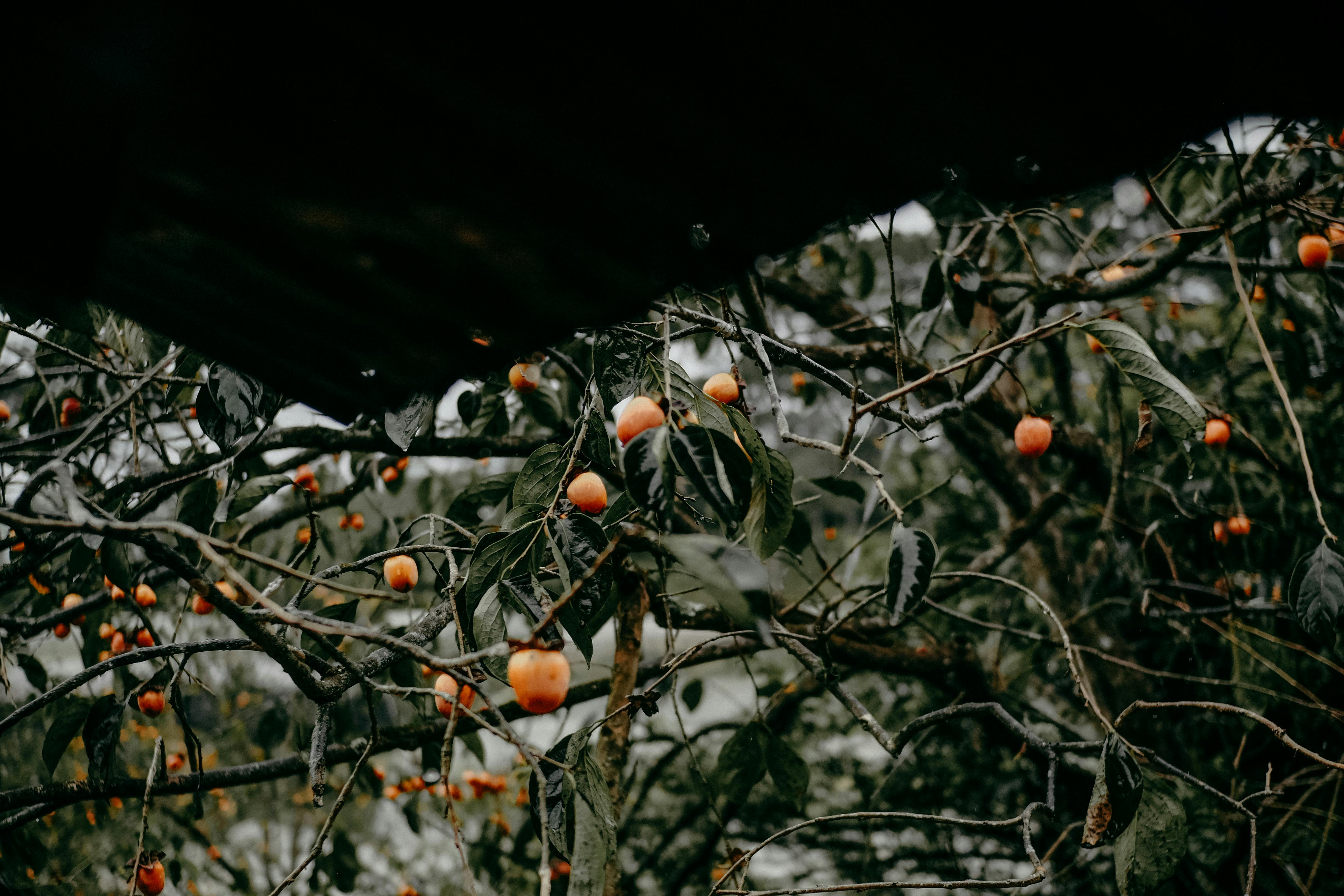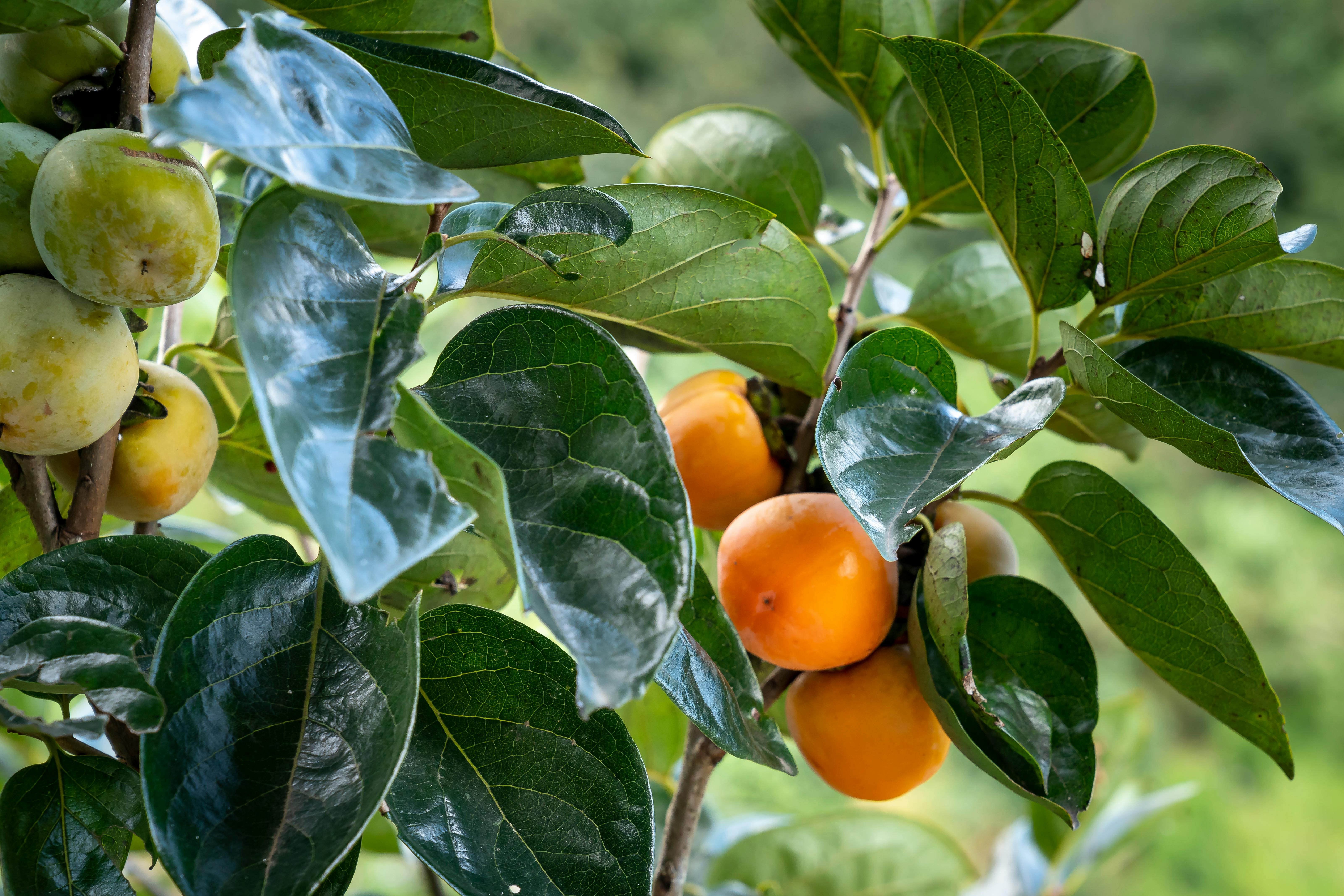Persimmon trees are a deciduous tree that bear a sweet, edible fruit. A popular crop in many parts of the world, persimmons are most commonly found in Asia. While the exact time of year in which persimmon trees bear fruit varies from region to region, depending on the climate and weather patterns, typically this happens during late summer into early autumn months.Persimmon trees typically begin to bear fruit when they reach maturity, which generally occurs two to three years after planting. The exact time of year varies depending on the variety of persimmon tree, but most species produce fruit in late summer or early fall.
How Long Does It Take for a Persimmon Tree to Bear Fruit?
Persimmon trees typically take three to five years to bear fruit. During this time, regular and consistent care should be given to ensure the tree grows healthily and produces an abundance of fruit. The persimmon tree should be watered deeply and regularly during the growing season. In addition, fertilization should be done every spring before the buds begin to swell in order to promote growth. Pruning and shaping of the tree should also be done when necessary.
In ideal conditions, a persimmon tree can begin bearing fruit as early as its third year after planting. Climate plays a major role in how quickly a persimmon tree will bear fruit; cooler climates may delay fruiting by several years compared to warmer climates. If planted in the right location with proper care, a persimmon tree can be expected to produce a full crop of fruit within five years after planting.
Once established, persimmon trees are generally productive for many years. With proper care and maintenance, a mature tree can produce heavily for up to 25 years or more. In some cases, they have been known to live and produce fruit for up to 50 years or more!
Overall, with proper care and maintenance it won’t take long for your persimmon tree to start producing delicious fruits! With patience and a little bit of TLC, you’ll have an abundant crop of sweet persimmons in no time!
What Factors Affect When a Persimmon Tree Bears Fruit?
Fruit production in persimmon trees is affected by several factors, such as climate, soil type, rootstock selection, and the age of the tree. In order for a tree to produce fruit, it must have been planted in an environment that is suitable for its growth. The climate must be warm enough to support blooming and pollination. The soil should be well-drained and high in organic matter. Additionally, the right rootstock needs to be chosen for the area and variety of persimmon being grown. Finally, the age of the tree can also affect when it begins to bear fruit; most trees will take 3-5 years after planting before they start producing a crop.
Climate is perhaps the most important factor contributing to when a persimmon tree will bear fruit. Persimmons are best suited to areas with mild winters and warm summers with temperatures ranging from 65-90°F (18-32°C). Temperatures outside this range can adversely affect blooming and pollination, resulting in fewer fruits being produced or none at all.
The type of soil in which a persimmon tree is planted can also affect when it begins bearing fruit. The soil should be well-drained yet retain moisture well, and should have plenty of organic matter such as compost or manure incorporated into it. Poor drainage or overly sandy soils can result in poor growth and delayed fruiting times.
Rootstock selection is also a critical factor when considering when a persimmon tree will bear fruit. Different varieties of rootstocks may have different growth habits, which can affect how quickly the tree matures and begins producing fruit. Generally speaking, trees grafted onto dwarfing rootstocks will begin bearing earlier than those grafted onto larger stocks.
Finally, age plays an important role in determining when a persimmon tree will begin bearing fruit; most trees take 3-5 years after planting before they start producing a crop. This time period varies depending on the variety being grown as well as other environmental factors such as climate and soil type mentioned above.
What Kind of Climate Is Best for Growing Persimmon Trees?
Persimmon trees thrive in climates with mild winters and hot summers. They are best suited to areas with moderate temperatures, such as the Mediterranean, parts of the Caribbean, and the southeastern United States. Persimmons are hardy and can survive in colder temperatures, but they are less likely to fruit in colder climates. The optimal temperature range for persimmon trees is between 65-85 degrees Fahrenheit (18-29 degrees Celsius).
The amount of sunlight that persimmon trees need also depends on the climate. In general, they prefer full sun or partial shade. In warmer climates, they should be planted in a shaded area to prevent sunburn or heat stress. In cooler climates, they should be planted in an area that receives at least 6 hours of direct sunlight per day to ensure adequate fruiting. Persimmon trees are also sensitive to drought and need consistent watering during their establishment period.
Persimmon trees can also tolerate a wide range of soil types but prefer well-drained soils with a pH between 5-7.5. They do not tolerate standing water or overly wet soil conditions so it is important to ensure that drainage is adequate before planting. Additionally, persimmons should not be planted near other trees that have aggressive roots as this may lead to competition for water and nutrients.
What Types of Fruits Do Persimmon Trees Produce?
Persimmon trees produce a large, round to oval-shaped fruit that can range in color from yellow-orange to dark red-orange. The inside of the fruit is typically soft and sweet and is often compared to a cross between a peach and an apricot. Persimmons are high in dietary fiber, vitamin C, and potassium. They also contain smaller amounts of calcium, magnesium, phosphorus, vitamin B6, folate, and iron. The fruits are best eaten fresh off the tree when they are ripe but can also be dried or canned for later use. The leaves of persimmon trees can also be brewed into a tea that has many health benefits.

Harvesting Fruits from a Persimmon Tree
Harvesting fruits from a persimmon tree is relatively simple and can be done by hand or with a tool, such as a pole picker. The best time to harvest persimmons is when the fruit is still firm. Firmness can be determined by gently squeezing the fruit and checking for soft spots. Fruits should be picked carefully so that the stem remains intact, as it will help keep the fruit fresh for longer. If harvesting with a pole picker, care should be taken to ensure that the fruit is not damaged in the process. After harvesting, it’s important to inspect each piece of fruit for damage or signs of disease before storing or consuming them.
When harvesting fruits from a persimmon tree it’s important to remember that not all fruits will ripen at the same time. It’s best to check the tree regularly and harvest ripe fruits when they are ready to avoid over-ripening. To speed up the ripening process, some people place harvested fruits in a paper bag with an apple or banana for several days until they are softer and sweeter. When storing fresh harvested persimmons, make sure to keep them in a cool place away from direct sunlight. This will help them stay fresh for longer periods of time.
What Are the Health Benefits of Eating Persimmon Fruits?
Eating persimmons can provide a wide range of health benefits due to their rich nutritional content. Persimmon fruits contain beta-carotene, which is converted to vitamin A in the body, and this is essential for vision and immune system health. They are also packed with dietary fiber and have a low glycemic index, helping to regulate blood sugar levels and reduce the risk of type 2 diabetes. Additionally, persimmons are a good source of vitamins C and E, as well as potassium, iron, calcium and various other minerals.
The potent antioxidant content in persimmons may help to reduce inflammation throughout the body, reducing the risk of chronic diseases such as heart disease and cancer. Flavonoid compounds found in persimmon fruits can also protect cells from damage caused by free radicals. The dietary fiber found in persimmons can help improve digestion and can even reduce cholesterol levels. Furthermore, eating persimmon fruits may help to prevent constipation due to their high water content.
Eating persimmons regularly may also have positive psychological effects due to their high nutrient content. Consumption of these fruits has been linked with improved moods due to their serotonin content that helps to boost serotonin levels in the brain. Additionally, they contain tryptophan which is an amino acid that helps to regulate stress hormones such as cortisol. Overall, persimmons are highly nutritious fruits that offer numerous health benefits when eaten regularly.
Do All Types of Persimmon Trees Produce Fruits At the Same Time?
No, different types of persimmon trees produce fruits at different times. The season for harvesting persimmon fruits can vary depending on the type of tree. Some varieties of persimmon trees are known to produce fruits earlier than others. For example, astringent persimmon trees tend to produce fruit earlier in the season than non-astringent varieties. The late-season varieties usually begin producing their fruits around mid-summer and can continue until late fall or early winter.
The timing of harvest also depends on the climate in which the tree is grown. In cooler climates, persimmon trees may take longer to ripen their fruits due to lower temperatures and shorter days. In warmer climates, persimmons may ripen faster due to higher temperatures and longer days.
The amount of harvested fruit also varies from tree to tree, depending on its age and whether or not it was pruned properly during the growing season. Trees that are well cared for will typically produce larger yields than those that are not pruned or otherwise neglected. Additionally, younger trees typically yield fewer fruits than established ones that have had several years to mature and bear fruit.
For best results, it’s important to select a variety of persimmons that is well suited for your climate and be prepared to wait for it to ripen its fruits at its own pace. With patience and proper care, you can enjoy a harvest of sweet and juicy persimmons every year!

Conclusion
The time of year that persimmon trees bear fruit is dependent on the type of persimmon tree. Generally, Japanese and Fuyu persimmons will ripen in late fall, while Hachiya persimmons will ripen in late winter or early spring. It is important to select the right type of tree for your climate and growing conditions for optimal fruit production. With proper care and maintenance, persimmon trees can provide a delicious bounty for many years to come.
If you are considering planting a persimmon tree, it is important to do your research to determine which type of tree is best suited for your area. Once you have selected a variety of tree, you can look forward to the harvest season when your fruit will be ripe and ready to pick. Enjoy the sweet taste of nature’s bounty with this unique and flavorful fruit!



